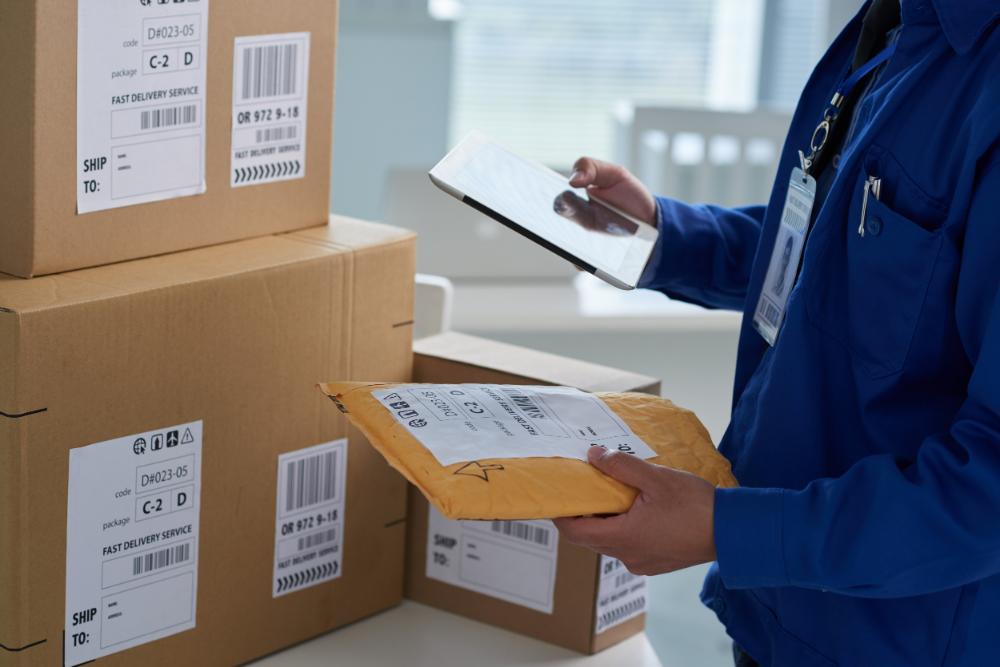
Choosing the right shipping and packaging materials is really important for getting products to customers safely and cost-effectively. The wrong choices can result in damaged goods, higher costs, and dissatisfied buyers.
Consider the Product
The first factor in packaging material selection is the product itself: its size, weight, shape, fragility, and composition. For instance, heavy machinery demands extremely rugged crating, while delicate glassware needs superior cushioning. Food items usually require specialized liners to prevent contamination.
Shipping Modes and Distance
How a product is shipped, and how far, affects material requirements. Packages going by air freight, for example, must be lighter, while those on trucks or railroads can be heavier. Local deliveries face fewer hazards compared to cross-country hauls. Using materials like foam and bubble provide cushioning for long, bumpy journeys.
Environmental Factors
You would need to pay attention to environmental factors that could affect shipments. Things like humidity, moisture, or extreme temperatures may require desiccants, moisture barriers, refrigerants, or insulating materials. When shock and vibration could be issues, extra cushioning is needed.
Packaging Function
Packaging materials serve various functions: product protection, tamper resistance, printability for labels/marketing, etc. Having clear functional goals helps to guide ideal material choices.
Common Shipping Materials
Some popular packaging material options are:
- Corrugated Fiberboard – This rigid yet lightweight paper-based material excels for external shipping boxes, cushioning inserts, and internal partitions.
- Plastic Films – Polyethylene and other flexible plastic sheets work well for cushioning, wrapping, bagging, and moisture protection.
- Loose-fill – Pellets, crumpled kraft paper, or air cushions create low-cost void-fill options inside boxes.
- Wood/Pallets – Heavy-duty crates, skids, and pallets fashion sturdy load-bearing bases ideal for machinery or bulk products.
- Fabric/Fiber – Woven materials like burlap provide flexibility, breathability, and durability for some applications.
- Molded Pulp – Made from recycled fibers, molded pulp creates custom cushioning inserts and product trays.
Molded Foams
For premium cushioning and thermal insulation, some molded foam solutions, like EPS products, provide stellar impact absorption and temperature regulation. The experts at Epsilyte explain that these are lightweight yet highly protective, which make them great for fragile, temperature-sensitive shipments.
Special Protective Packaging
In certain cases, extra protective features are required for hazardous, sensitive, or high-value goods. This can include things like:
- Tamper-evident and security packaging
- Electrostatic discharge (ESD) protective materials
- Reinforced crates for sensitive scientific instruments
- United Nations-rated hazmat containers
Utilize Packaging Specialists
Many businesses tap packaging engineers and specialists to scientifically evaluate their products and supply chains. These experts conduct certification testing, design custom solutions, and make data-driven material recommendations to optimize protection while helping to control costs.
Minimize Environmental Impact
Companies also need to consider sustainability when it comes to choosing materials. Using recycled content, renewable resources, and streamlined designs to cut waste are increasingly becoming the norm. Look into options like:
- Molded fiber and molded pulp
- Plant-based bioplastics
- Foams and films with recycled content
- Reusable or returnable containers
Return Logistics
For products likely to be returned or requiring reverse logistics, select packaging that is designed for multiple use cycles. Water-resistant corrugated cases, reusable foam inserts, and tough plastic totes allow economical reuse with less waste and replacement costs.
Branding and Labeling
The way you package your products influences how buyers perceive your brand. So while not the top priority, aesthetics, printability, and unboxing experience shouldn’t just be afterthoughts. Properly printing branding elements often requires specific material surfaces.
Budget Realities
Naturally, budget constraints come into play. While premium protective packaging yields lower product damage rates, it also costs more upfront. Rigorously forecast shipping volumes and damage rates, so you can balance expenses versus losses. Sometimes spending slightly more delivers substantial savings.
Conclusion
No single packaging material is ideal for every situation. Optimizing for your unique products and supply chain realities is key. But taking a comprehensive, data-driven approach ensures every shipment arrives undamaged and delights customers.…